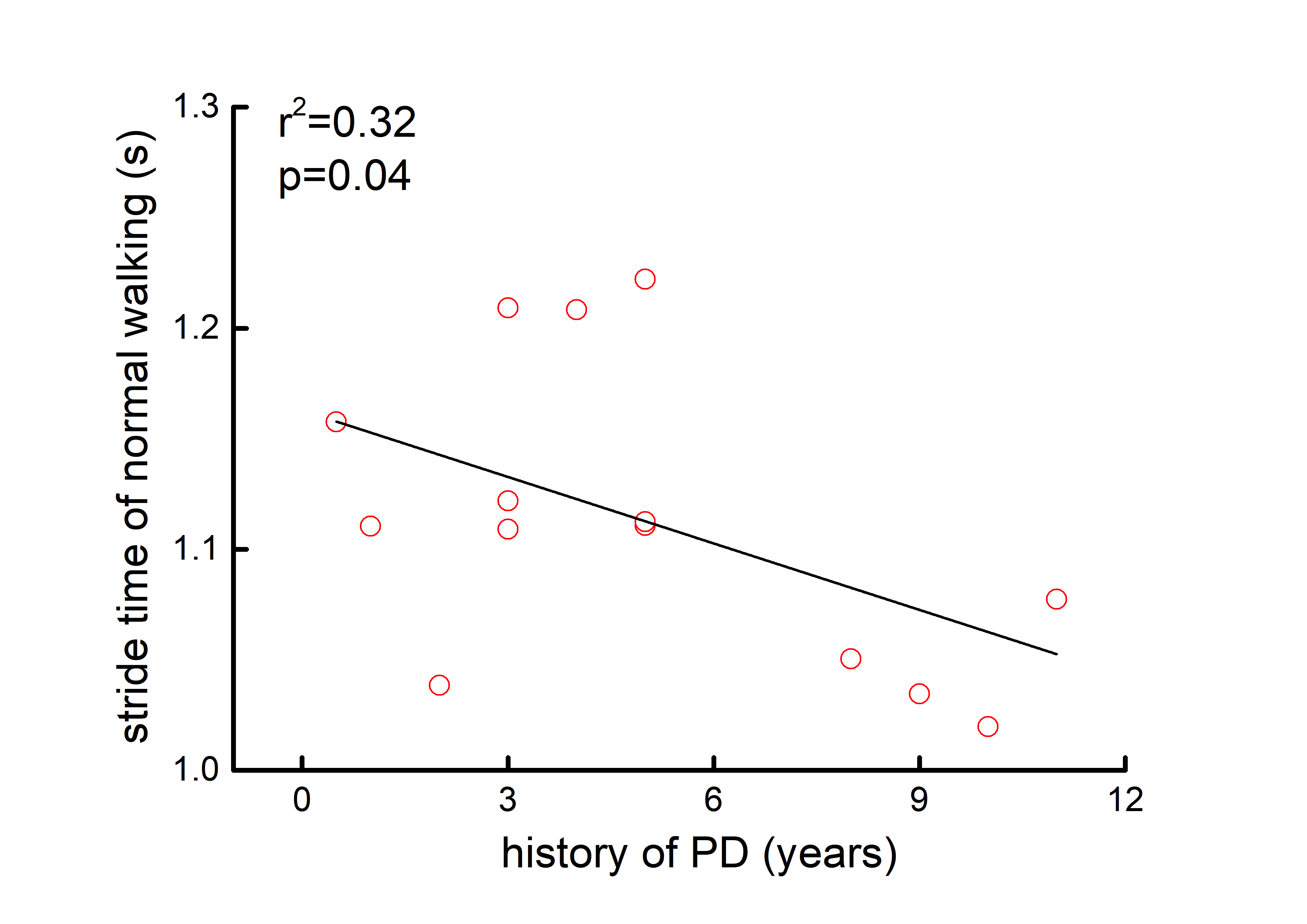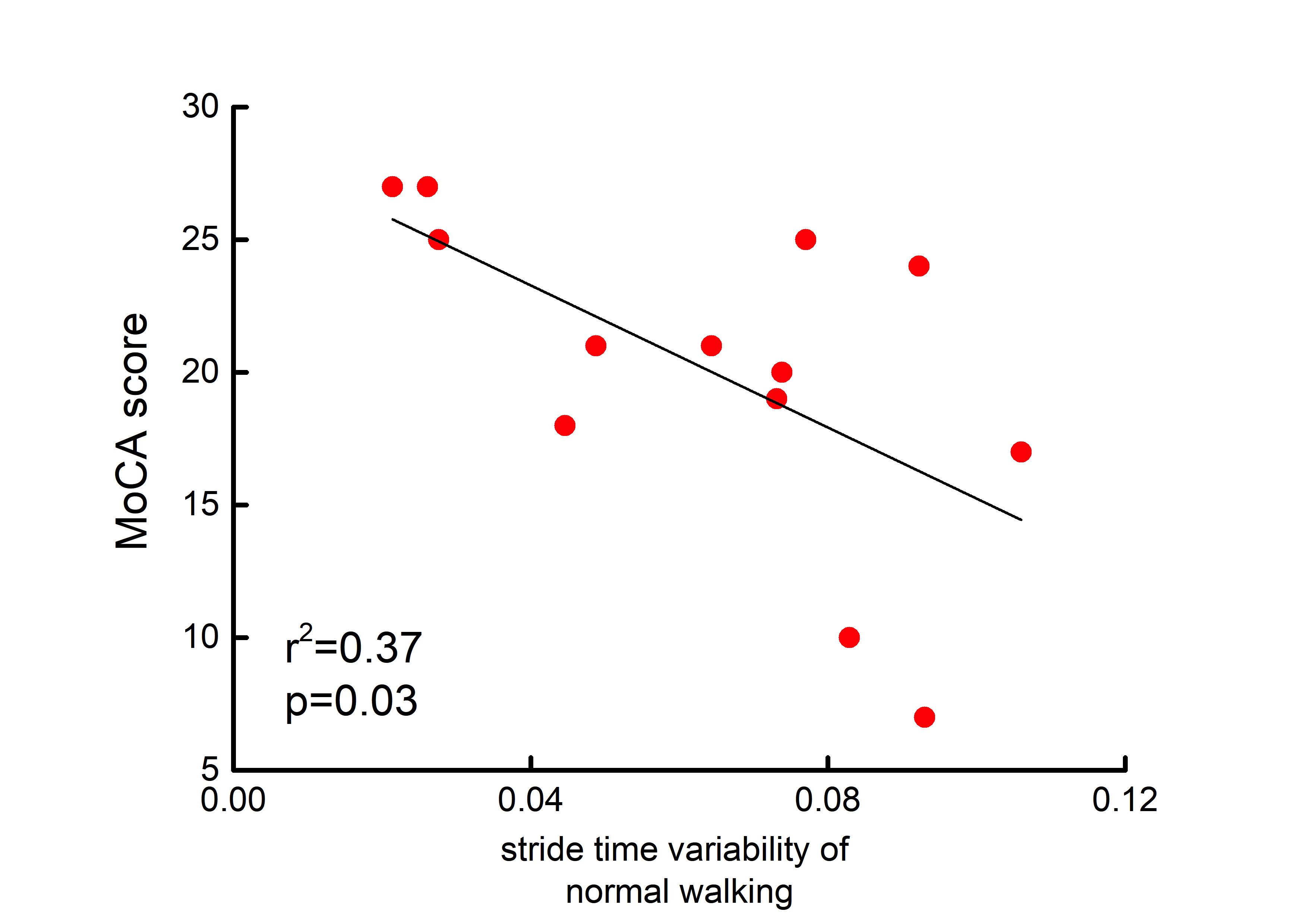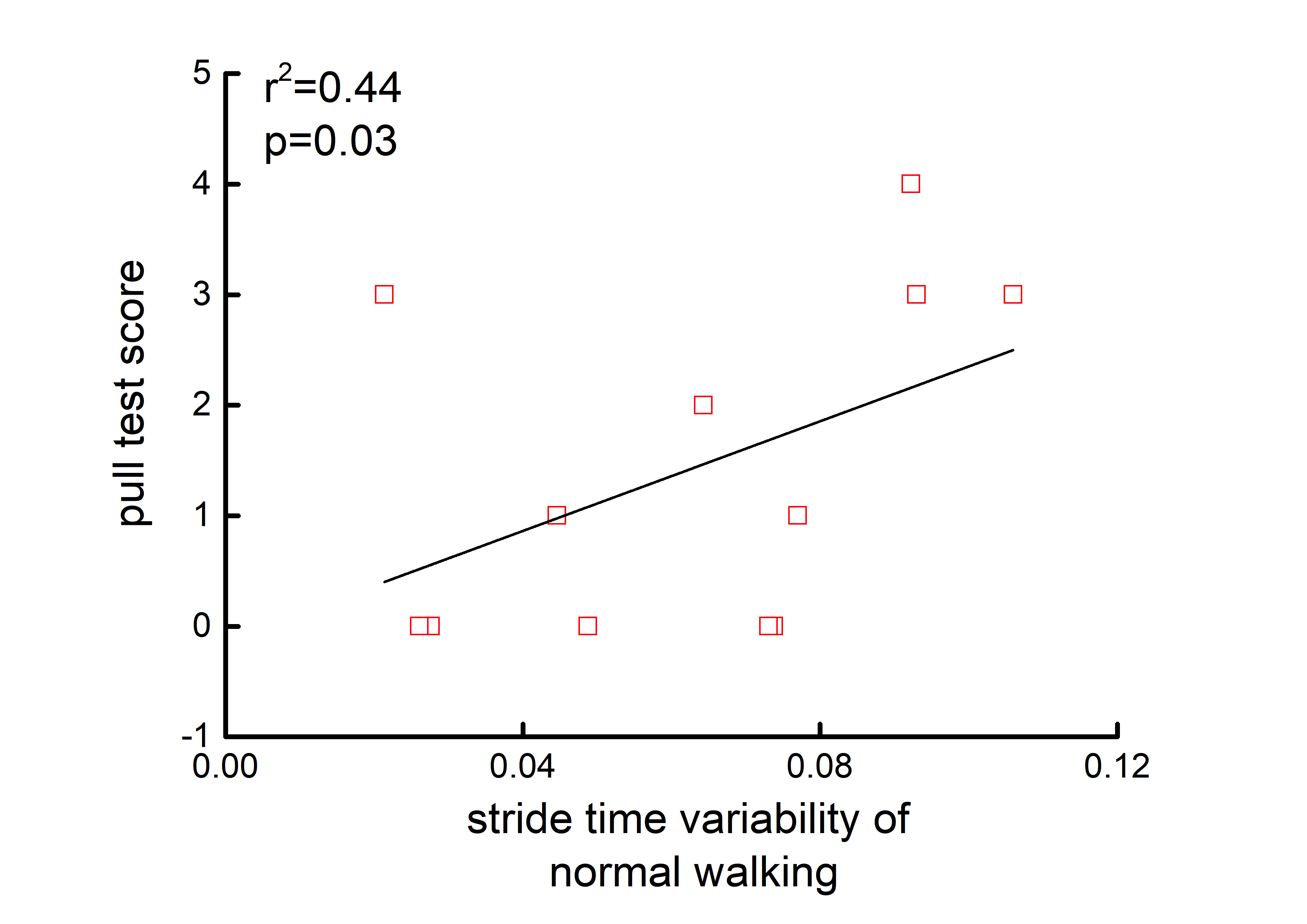Session Information
Date: Sunday, October 7, 2018
Session Title: Technology
Session Time: 1:45pm-3:15pm
Location: Hall 3FG
Objective: The purpose of this pilot study was to determine if gait metrics derived from the App correlated with clinical symptoms and functional performance in those with PD.
Background: Gait disturbances are common and costly in individuals with Parkinson’s disease (PD). The control of gait decreases with disease progression, varies considerably throughout the day and with medication usage, and predicts future falls in this vulnerable population. There is thus an urgent need to develop low-cost and portable tools to assess clinically-meaningful metrics of gait in remote settings, far away from the laboratory or clinic. We recently created and validated a smartphone App that enables such remote gait assessments.
Methods: Fourteen participants with idiopathic PD aged 30-83 years completed a single study visit in the ‘off’ medication condition. They completed the Unified Parkinson Disease Rating Scale part III (UPDRS-III) and the Montreal Cognitive Assessment (MoCA). They then used the App to complete a gait assessment, consisting of one 45-second walk at preferred speed. The App provided multi-media instructions to the participant, and then instructed them to place the phone in the front pocket of their pants. Voice instructions then signaled the beginning and end of the trial. 3-dimensional acceleration, 3-dimensional angular velocity, and magnetometer data were stored and used to calculate mean stride time (ST, sec) and stride time variability (STV, standard deviation about the mean stride time).
Results: The measured ST and STV were not correlated with one another across participants. Linear regression models adjusted for participant age revealed that those with shorter ST when walking had longer duration since PD diagnosis (r2=0.32, p=0.04, Figure 1). Those with greater STV exhibited worse pull test performance within the UPDRS-III (r2=0.44, p=0.03, Figure 2) and poorer cognitive function as measured by the MoCA total score (r2=0.37, p=0.03, Figure 3). These correlations were independent of self-reported pocket tightness. Neither ST nor STV associated with the total score of UPDRS III.
Conclusions: The results suggest that this novel and easy-to-use smartphone App is feasible for people with PD and can capture several clinically-meaningful parameters of gait. Future studies are warranted to further confirm the validity and reliability of these outcomes, both within clinical and remote settings.
References: Manor B, Yu W, Zhu H, Harrison R, Lo OY, Lipsitz L, Travison T, Pascual-Leone A, Zhou J, Smartphone App–Based Assessment of Gait During Normal and Dual-Task Walking: Demonstration of Validity and Reliability, JMIR Mhealth Uhealth 2018;6(1):e36, DOI: 10.2196/mhealth.8815.
To cite this abstract in AMA style:
D. Su, Z. Liu, W. Yu, H. Zhu, O. Lo, B. Manor, T. Feng, J. Zhou. Smartphone App-Based Assessment of Gait in patients with Parkinson’s disease [abstract]. Mov Disord. 2018; 33 (suppl 2). https://www.mdsabstracts.org/abstract/smartphone-app-based-assessment-of-gait-in-patients-with-parkinsons-disease/. Accessed December 20, 2025.« Back to 2018 International Congress
MDS Abstracts - https://www.mdsabstracts.org/abstract/smartphone-app-based-assessment-of-gait-in-patients-with-parkinsons-disease/



